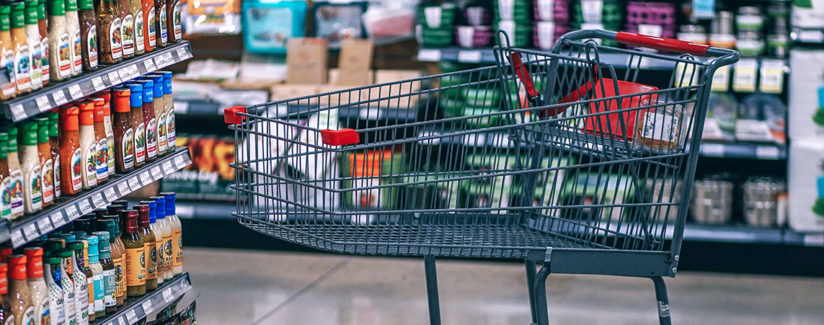
Health Claims on Labels: Can They Be Trusted?
03/06/2019
Labels on products at the grocery store often carry descriptive … yet still confusing … health claims. Statements like “DHA, an omega-3 fatty acid, supports normal development of the brain!” that you may see on egg cartons.
These are health claims placed on the food label, but are they backed up by science? Should we pay attention to these claims to help our health? Or are they just a marketing ploy from food companies trying to get you to buy their products? We sought out Dr. Marie-Ève Labonté, Assistant Professor at Laval University, to answer these questions and more about labels on food products in Canada.
What exactly are health claims? Are there different types of health claims used on food labels in Canada?
Labonté: “Health claims are defined by Health Canada as ‘any representation in labeling or advertising that states, suggests, or implies that a relationship exists between consumption of a food or an ingredient in the food and a person’s health’. In other words, they are statements about the positive effects that a certain food or food component might have on a person’s health status.
“In Canada, there are two categories of health claims: Disease risk reduction claims and Function claims. All health claims that fit in these two categories are regulated, meaning that they have to first be approved by Health Canada before they can be placed on a food label
“Disease risk reduction claims link a food or a component of the food to reducing the risk of getting a certain diet-related disease and condition (example, ‘A healthy diet rich in a variety of vegetables and fruit may help reduce the risk of heart disease.’). Disease risk reduction claims also include therapeutic claims, which are about the treatment or improvement of certain diseases or health-related conditions (example, ‘Soy protein helps lower cholesterol.’).
“Function claims, on the other hand, state the effect a food component has on the normal functions of the body (example, ‘Consuming 3.5 grams of fibre from psyllium seed […] promotes regularity.’). A type of these claims are nutrient function claims, which explain the roles that energy or nutrients play in maintaining good health or for normal growth and development (example, ‘Protein helps build and repair body tissues’).
“Other than these regulated health claims, food packages in Canada can also carry general health claims, which are not specifically developed by the government. These are often symbols or logos that are displayed on the front of the package (for example, a healthy check mark). These types of health claims are developed by organizations or corporations (such as food companies) and are not regulated.”
In the United States, the Food and Drug Administration regulates health claims on food labels.
Who is approving the use of these claims? Are health claims backed up by science and can I trust that the information is up to date?
Labonté: “Regulated health claims used on food labeling and advertising have to be backed up by science and approved by Health Canada before they can be used. This is done to make sure that they are truthful and not misleading. For example, before any disease risk reduction claim or therapeutic claim is accepted, all available scientific data is reviewed, and an assessment is posted on the Canadian government website. This web page lists all disease risk reduction claims and therapeutic claims that have been reviewed and either accepted or not accepted for use in the country up to now. It is expected that Health Canada will eventually review up-to-date science to see if accepted health claims are still backed by science and if claims that were previously not accepted can now be accepted.
“Unregulated general health claims (like the healthy check mark) are not necessarily approved by the government. These claims are required to be truthful and not misleading but, we can only tell if these types of claims are backed up by science if we read through documents created by the developers of these claims.”
Should I be paying attention to these claims to help with nutrition or health concerns I might have?
Labonté: “Interestingly, a recent study that I was a part of as a former postdoctoral fellow at the University of Toronto, showed that in general foods and beverages with health claims on their labels have an overall healthier profile, compared to those without claims. But, the study also showed that many food products of lower nutritional quality (for example, various snacks) were found among products with health claims. This might lead consumers to think that certain products with claims are more nutritious than they actually are. The overall nutritional quality of a food product is not always considered when determining if a food is allowed to carry a claim or not. So, for example, ready-to-eat breakfast cereals made of oats could potentially carry a claim about oat products and blood cholesterol lowering, while also being high in sugar. Because health claims highlight a few specific ingredients, like oats, and not others, like sugar, it is still important to look at the Nutrition Facts table and the ingredient list to get a better sense of the overall nutritional quality of the food you’re eating.
“Another important thing to keep in mind about health claims (both regulated and unregulated) is that they are optional statements. Food companies are relatively free to decide whether they wish to include health claims on their food products. So, a food product without a claim is not necessarily of lower nutritional quality than a similar food product with a claim. It might just be that the food company has decided not to include health claims on its products.”
What about products that aren’t made in Canada – are the claims made on these products checked out by anyone here in Canada before they are sold here?
Labonté: “All prepackaged products imported into Canada which are then sold to Canadian consumers have to meet certain requirements. Only claims that have been approved for use in Canada can be shown on imported products. For example, the United States allows a claim stating that diets low in total fat may reduce the risk of some types of cancers, while Canada does not. If a food product from the United States with this claim on the label is imported into Canada, a new product label without the claim has to be created before the product is sold to Canadian consumers.”
What are food manufacturers allowed to claim – are there any regulations about what they are legally allowed to put on packaging?
Labonté: “Along with regulating health claims, Health Canada also has a certain list of requirements that a food must meet to be able to carry a certain health claim. For example, to use a nutrient function claim for a vitamin or mineral in a food product, the food must have at least 5% of the Daily Value of that vitamin or mineral. Another example is that some specific food products such as jams or jam-type spreads, marmalades, preserves and jellies are not allowed to carry the disease risk reduction claim “A healthy diet rich in a variety of vegetables and fruit may help reduce the risk of heart disease”.”
Health claims on food labels are regulated by the federal government. The claims must be verified by scientific data. The statements are optional, so food may have health benefits even if it doesn’t carry a specific label. Label claims are a good starting point to learn about the nutrition of food.


























